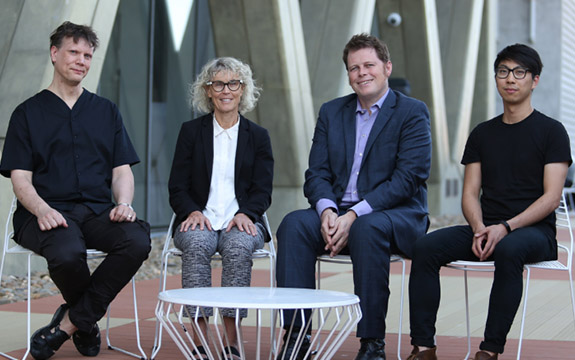
Architecture at Swinburne is defined by smaller class sizes and the calibre of its teaching staff.
In summary
- Swinburne will offer a joint Master of Architecture and Urban Design from August 2019
- The two-year course is responding to the emerging need for future-ready urbanists
- Developed in close partnership with a course advisory committee comprised of industry executives and experts
As part of its newly-developed architecture program, Swinburne will offer a joint Master of Architecture and Urban Design from August 2019.
The two-year course is responding to the emerging need for future-ready urbanists who are comfortable transcending the traditional boundaries of the two disciplines.
Swinburne is celebrating its launch by offering scholarships providing up to 100 per cent fee reduction for exemplary students.
The architecture and urban design courses complement the university’s strong standing and reputation in design, technology and industry engagement.
The announcement follows Swinburne’s recent success in the 2019 Good Universities Guide where architecture at Swinburne was rated Victoria’s “best overall experience” by undergraduate students.
Architecture at Swinburne is defined by smaller class sizes and the calibre of its teaching staff, who bring international practice experience and awards for both practice and teaching to the table.
Innovation and excellence
The new takes a whole-of-practice approach and has an emphasis on preparing students for employment and business.
The course has been developed in close partnership with a course advisory committee which is comprised of industry executives and experts from Grimshaw, Hayball, McBride Charles Ryan, MGS Architects, Arup, Aurecon, AECOM, City of Melbourne and others.
Students will have the opportunity to work on live briefs from industry partners, enabling them to gain real-world experience and build their networks.
“Cities are growing at unprecedented rates with over half the world’s population already living in urban areas. That is expected to rise to more than two-thirds by 2050. As Australia’s fastest growing city, Melbourne is no exception” says Professor Jane Burry, Dean of Swinburne’s School of Design.
Professor Burry explains that as cities become larger, denser and more complex, traditional approaches to planning give way to more emergent and data-responsive evolutionary patterns of development.
“This program has been designed in collaboration with industry and local government to meet the growing need for design professionals who are skilled in working at multiple scales and in many formats and media, ranging from the building scale to whole cities and regions,” says Professor Burry.
In addition to developing design skills, the program focuses on emerging technologies and digital workflows, including geographic information system (GIS), building information modelling (BIM), virtual reality (VR) and augmented reality (AR), and procedural modelling, personal development and the art of negotiation.
“We focus on developing designers who are self-aware, know who they are and the type of work and contribution they want to make. We are looking for those capable of thinking outside established paradigms, who will make an exceptional contribution in a challenging environment.”
Students will immerse themselves in a studio-centred curriculum and have opportunities to choose research topics that align with their interests. They are able to do this through a future-focused design research studio which runs the duration of the course and covers health, mobility, ecologies and fabrication.
Space to create
Students will create and collaborate in Swinburne’s multi-million dollar campus facilities, including the , the , Swinburne’s new Protolab, Energy Transformation Lab, and .
They will also benefit from direct links to Swinburne’s research bodies: , and .
“The design school sits within Swinburne’s Faculty of Health, Arts and Design and the synergy between the schools is manifest in research that crosses boundaries, such as design for health and human wellbeing, urban ecologies and the opportunity to work with the social sciences,” says Professor Burry.
“Architecture students have found themselves working closely with biotechnologists in developing and exploring the application of high-performance natural growing building materials.”
Dean’s scholarship
Swinburne is offering its Dean’s Inaugural Scholarship to exemplary students. The scholarship provides 100 per cent fee reduction for the Master of Architecture and Urban Design, Master of Architecture and Master of Urban Design. Scholarships, open to all applicants, are assessed at the time of application and close on 1 May. .






